The below interview is thanks to Neil MacDonald, who caught up with Dick Telford in January 2003. With Neil’s permission, the interview has been restored so that today’s generation can appreciate and learn from one of Australia’s greatest ever coaches.
Neil MacDonald managed the Geelong Region Cross Country team from 2000-2007.
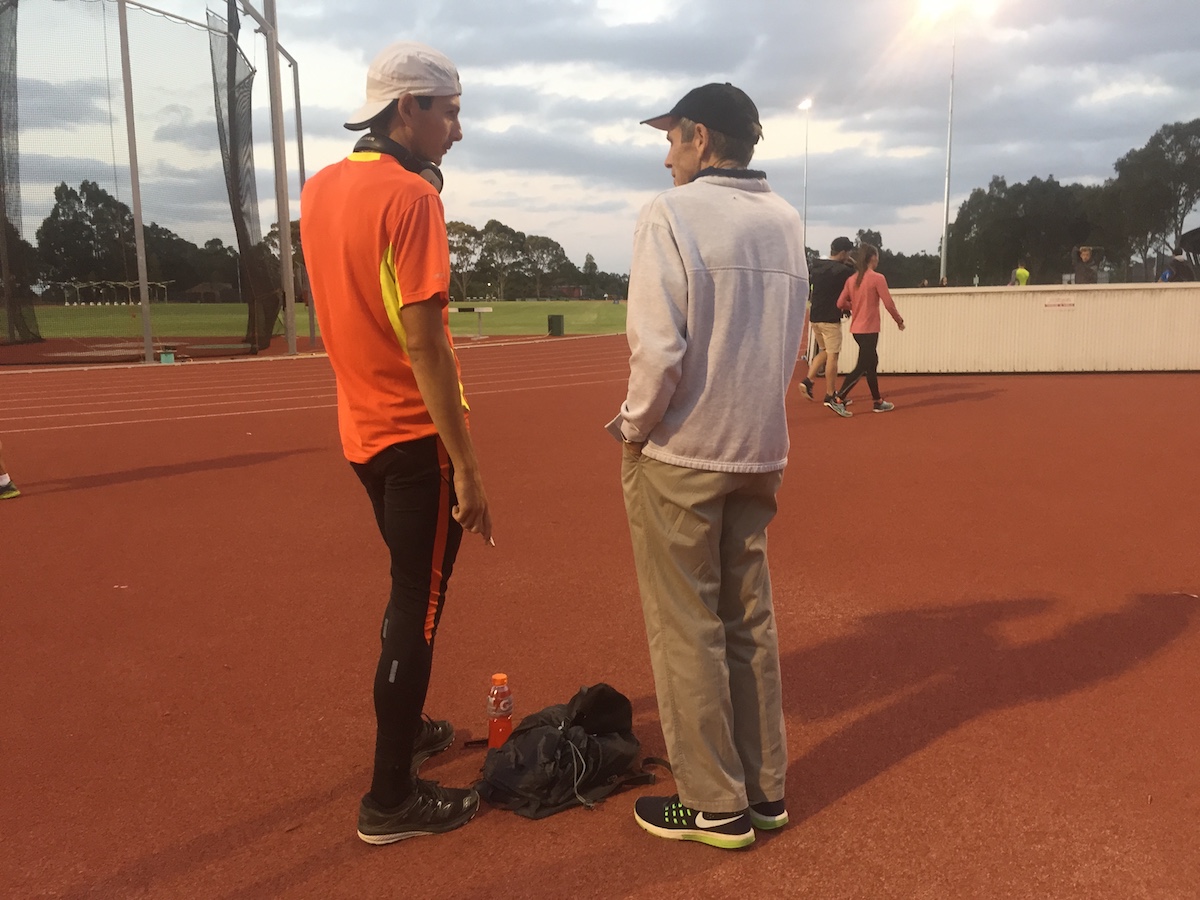
DICK TELFORD – TAKING A SCIENTIFIC APPROACH.
January 2003
Dr. Dick Telford is Australia’s best-known sports scientist. He is also one of Australia’s top coaches, guiding the careers of many of our top middle and long distance runners. I was fortunate to catch up with Dick at Falls Creek for a relaxing chat on a range of athletics topics.
N.M. Dick, you have been travelling to Falls Creek over Christmas / New Year for many years now. What has Falls Creek got to offer distance runners?
D.T. I think that Falls Creek is the best altitude training venue we have in Australia. However, I sometimes go up to Charlotte Pass and Thredbo because they are close to Canberra being only two and a half hours away. We also occasionally use the Brindabella Ranges which is only an hour out of Canberra. That’s at about 1600 metres but the running trails at Falls Creek are far superior to anything that these other venues have to offer. The other reason we choose Falls Creek is that there are a lot of runners here and the atmosphere and group training effect is fantastic.
N.M. You have completed a study on the benefits of altitude training. Could you briefly go through your findings?
D.T. The study was in 1993 and that was when I first met Said Aouita. I was able to recruit a few people from all over the world, a couple from America, a couple from England, and some from Morocco to assist. Basically, we had a group training at Charlotte Pass living and training at 1800 metres and another group at Narrabeen living at zero metres. We had both groups completing very similar training programmes in matched pairs. Both groups were well looked after with massage and physio for three weeks and after final testing we found there was a big improvement in performance from the altitude group – 7 % for a 3000 metre run at sea-level. That 7% improvement was fantastic but the only complicating factor was that the control group who trained and lived at Narrabeen improved 7% as well. So it just shows the importance of having a control group. Our conclusion from that study was that while the altitude training camp was successful, it was no better than the control group that was based at sea-level and that improvement came from the ‘camp or group training effect’.
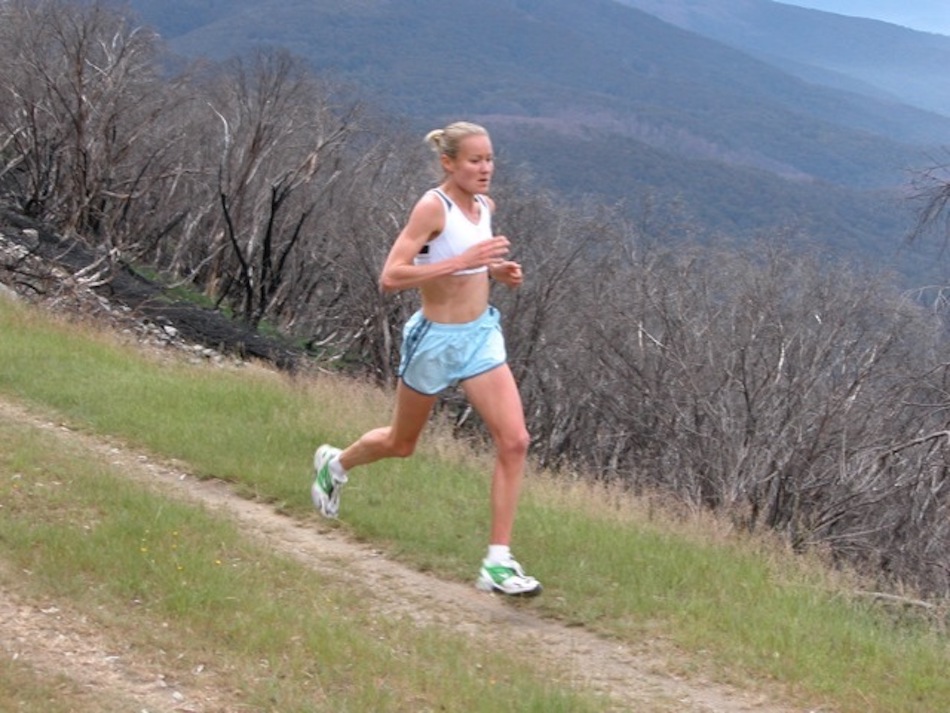
N.M. Do you think 1600 metres, the altitude at Falls Creek, is high enough?
D.T. Yes, I do. I think you can achieve good ‘altitude effect’ from a thousand metres up because right from the start there is a decrease in maximal oxygen up-take. This even happens at Canberra with its 640 metre altitude. That’s why it’s hard to run qualifying times or Personal Bests over 5 and 10 kilometres in Canberra. At 640 metres your max VO2 comes down 3 – 4 % in an elite runner, although it doesn’t change at all in a non – elite runner. So if that’s happening to elite runners it means that their respiration system is put under a little more stress that the body gradually adapts to.
N.M. Is three weeks at altitude the right length to gain a benefit?
D.T. No, I would say that it varies but for people who have to work or study or have other commitments, three weeks tends to be suitable and practical. However, I’ve worked with Yobes Ondieki, Arturio Barrios, Rob de Castella and many others who’ve lived at altitude for months and achieved fantastic results. What I can’t say is whether they would not have achieved fantastic results if they had not lived at altitude. But my belief or ‘gut feeling’ is that long term stays at altitude can produce excellent results and a series of short terms stays at altitude can also have good effects. However, don’t ask me which is best because a proper study would be needed rather than just listening to what athletes say.
N.M. I would assume that different athletes respond in different ways?
D.T. True, but it’s also amazing just how similar humans are. We hear about ‘responders’ and ‘non – responders’ but I don’t go along with that very much. When you look at the results it’s pretty clear that with a system of breathing air in, exchanging gases and running, people aren’t all that much different unless you’re comparing a 400 metre runner from a marathon runner, then very different things occur.
N.M. What is your current position?
D.T. For the last 6 – 7 years I have been a consultant to the Institute of Sport as a coach. I also work as a Professor of Exercise Physiology at Griffith University on the Gold Coast where I have Ph.d and Masters students who come down to Canberra to complete the practical component on their study. I also work with an organization called the
“Bluearth Institute” which is a group that helps disadvantaged kids with low self-esteem. A colleague of mine has put a lot of money into the project and has just employed 30 people full time – I had to mention the “Bluearth Institute” because, while its a non – paying position, it’s an important part of what I do.
N.M. You were involved in the Australian Institute of Sport during the early years. That must have been an exciting time setting up what is now regarded as one of the world’s leading Sports Institutes?
D.T. Yes, I think the A.I.S. has made a huge difference to Australian Sport. I was the person who was given the charter of setting up the Philosophy of Sports Science and Sports Medicine in Australia. I was the first person appointed there and with colleagues was able to design laboratories. Initially, I travelled around the world to other institutes, then tried to give the Australian Institute of Sport our own flavour. One of the reasons I think it has been so important is that it paved the way for other Institutes to set up around Australia. Now every State has its own Institute and that’s fantastic.
N.M. A lot of elite athletes visit the A.I.S. Have you learnt a lot from athletes like Andre Bucher when they visit?
D.T. There is no question that I learn a little bit from all the athletes I come across. In terms of the longer distance athletes, and I’ll probably miss a few here, but obviously we’ve had Rob de Castella – he’s been my next door neighbour and one of my best mates for years. We started working together in 1981. Then there’s runners like Yobes Ondieki, who lived with Lisa in our house for a long time, Arturio Barrios, Alberto Salazar, then more recently Gert Thuys – who has a 2:06 marathon to his credit. To me 2:06 sounds OK for an 800! And there’s lots of others who visit the Institute, usually to be tested or to work out some sort of problem.
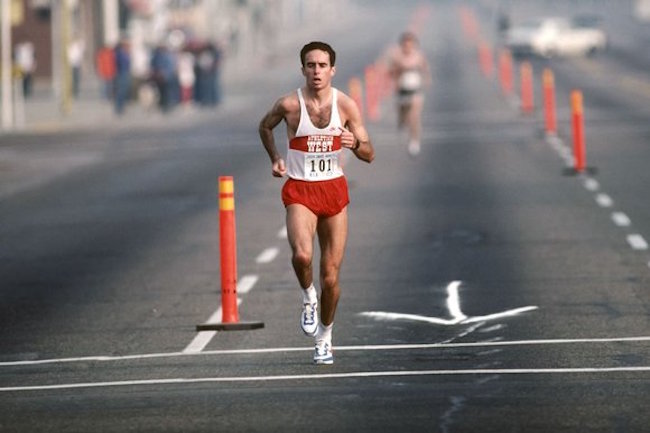
N.M. I can remember watching you starring for Preston in the V.F. A on a Sunday afternoon. In fact, you won a Liston Trophy for best player in the V.F.A. What was your sporting background?
D.T. Being a Melbournian I didn’t know about sports other that football and cricket, apart from when I went to see Ron Clarke and John Landy run. However, I did win the Combined High Schools Mile one year when someone talked me into running instead of going off to cricket practice. That is a bit of a regret because I would have loved to find out just how quick I could have been if I’d run earlier. In the end I didn’t start running seriously until I was 35 which is a fraction late, particularly over a mile.
N.M. What sort of times did you record?
D.T. Well, Neil – as you’ve asked I can honestly say that my last marathon, my last half marathon, my last 1500 metres and my last 800 metres, which were all recorded around the age of 45, are all P.B.’s. I don’t know how many other runners can say that their very last races over a distance were P.B.’s.
N.M. And your times for those distances?
D.T. Aahhh ….. 2:27 for the marathon, 1:57.6 for the 800, 3:57 for the 1500 metres and 68:30 for the half marathon but I’ve only ever run one half marathon. But the one that was particularly pleasing was the 1500 because it was at the World Masters Championships in Melbourne where I finished equal third with a fellow named Dixon.
N.M. Not Rod Dixon, the New Zealand Olympian?
(Ed. Rod Dixon won a bronze medal over 1500 metres at the Munich Olympics, then finished fourth at the Montreal Olympics over 5000 metres. To underline his outstanding range of athletic ability, Dixon also won the 1983 New York Marathon in 2:08.59)
D.T. No, it was his brother.
N.M. Were you an ‘experiment in one’? Were you trialling your running philosophies with your own training?
D.T. Yes, most definitely. I really wanted to find out what I could do. I started out running marathons in the Deek era and really enjoyed that. In fact, I started running long distances for marathons when I was Coaching Co-ordinator / Manager for the Victorian Cricket Team. They would be out in the field all day and I felt as though I had to do something so I’d go off and run for 90 minutes. But later on I wanted to find out what I could do over the middle distances so I had to get rid of the ‘marathon legs’ that I’d developed with all the long, slow running I’d been doing. It took me three years before I could break 4 minutes for the 1500 metres and 2 minutes for the 800 metres. It was interesting because I was getting older, 41, 42, 43 ……… and my times were coming down as I worked out how to train better and get the speed back that I had when I was younger. Basically, I did weights, circuits and the sort of speed work that I didn’t do when I was running marathons.
N.M. How important were the weights for getting the speed back in your legs?
D.T. They were very important. I probably had a few fast twitch fibres when I played football but turned those into slow twitch marathon fibres with all the endurance training I was doing. I reckon I probably ran as well as I could run for the marathon, although I ran the 2:27 in Canberra and it might be a little bit harder to run there because of the slight altitude. But I had to get the strength back pretty quickly as I could not wait five years or I’d be 49, so the weights worked well.
N.M. Did your VO2 max gradually drop as you aged?
(Ed. VO2 max indicates aerobic power although there are other factors that are important in determining running potential. However, elite middle and long distance athletes tend to have high VO2 max readings. In the general population VO2 max readings decrease with age.)
D.T. No, it didn’t. While I was running between the ages of 36 and 44 my VO2 max reading didn’t change at all. It just shows you what can happen if you continue to train. As some people say, you can ‘grow younger’. I didn’t grow younger but in terms of my fitness I was getting faster in all the shorter events and I reckon I could have run faster in the marathon if I had continued.
N.M. Were you ever keen to have a serious crack at football at A.F.L., or as it was then, V.F.L. standard?
D.T. Actually, I did. One of the Collingwood scouts picked me out when I was 17 and I went straight into the final senior practice match. I had followed Collingwood and I could not believe that I was lining up in the final practice match on Ken Turner, a guy who’d played for Victoria and here I was, a skinny little seventeen year old. I thought they were going to play me in the Under 19’s. It was just ridiculous – I hadn’t even played a game of football that year and I was playing on a guy I’d idolised in front of a crowd of about 25 000 people at Victoria Park. Although I got a few kicks it wasn’t a great start. But I was absolutely ‘#@&% scared’ and I didn’t know anybody. I never really got going even though I finished third in the Reserve’s Best and Fairest that year. I guess my heart wasn’t really in it so I ended up playing baseball for a year, then a bit of soccer with a group called Northcote Park, which I thoroughly enjoyed. Then I decided that I was going to really study hard until I just happened to be watching Preston play their third game of the season and a guy said, “Dick, we’d love you to come down for a kick.” By that stage I was getting itchy feet so I went down and even though I missed the first few games, that was the year I won the Liston Trophy for Best and Fairest in the Competition. The V.F.A. just suited me so well because, without the wings, I could run and use my fitness. With Collingwood, I was too small and would keep running into people. But in the V.F.A. I took great pride in running the opposition off their legs so they’d be exhausted.
N.M. The V.F.A. was a pretty tough competition in those days.
D.T. I did get knocked around a lot, especially after I won the Liston, but I had a few guys like Alan Joyce and John McArthur who played with Hawthorn and Bobby Ireland who came from Fitzroy, who would look after me. If I got hit, one of their guys would be flattened and everybody knew that.
N.M. How did you become involved in athletics coaching?
D.T. Like a lot of things, by default. I went up to the Institute of Sport by default because I was rapt with my job at the R.M.I.T. at Bundoora but Don Talbot offered me the A.I.S. job when I was lecturing at Deakin, down at Geelong. I didn’t even apply for the position. With the Victorian Cricket Coaching job, Frank Tyson asked me to take over because he had A.B.C. commitments. With the Preston Football Club I was watching the final practice game when they sacked their coach and I was offered the position. With the Preston Cricket Club, Jack Potter (Ed. Jack Potter played Test Cricket for Australia) suddenly resigned and asked me at a party if I could take over. I don’t think I’ve ever applied for a job – I don’t think I’d know how – I just seem to have fallen into things.
And with athletic coaching, it was exactly the same. Carolyn Schuwalow came to me and said that she’d lost her scholarship to the A.I.S. and asked if would I coach her? So that’s how I started. Then Andrew Lloyd came down and he had eyes on Carolyn Schuwalow so he’d hang around her. I don’t think he knew much about me but eventually he asked me to coach him as well so he could be near Carolyn rather than he thought I could coach as I had no record at the time. Then, I remember vividly how I came to coach my third athlete. I was around at a mate’s place in Greensborough when I received a call from the States and it was Lisa Martin. She said, “Dick, I met you over at the Edinburgh Commonwealth Games with Rob de Castella. Anyway, I have just broken up with my husband and he was my coach. Would you be able to coach me?”
At this stage she didn’t even know that I was coaching Carolyn. Anyway, I told her that I had a job and that I wasn’t sure if I had the time. In the end she said she’d give me time to think about it – she gave me 24 hours. I said why only 24 hours and she replied that she needed to meet me in Japan in four days time for a race. So that’s how I started with Carolyn, Andrew and Lisa.
N.M. You have coached some great athletes.
D.T. Oh yeah ……. I have really enjoyed the experience. What I reckon has been fantastic is that I have been able to coach people into the 5000 metres and 10 000 metres Finals at the World Championships and the Olympics. Obviously I have been lucky to work with some very talented athletes but no one else has been able to do that in the last 20 years. But now with Craig Mottram and Benita Johnson and the others coming through, I reckon we are ready to take the next step. I just love getting people into finals and having them run up to their potential. There’s been people like Darren Wilson running 60.02 in the Tokyo Half Marathon – that was a real thrill. Unfortunately, Darren couldn’t quite get it all together for more than a year and a half otherwise I believe he would have been an unbelievable champion. Then I’ve worked with Susan Hobson for a year when she made an Olympic Final, Carolyn Schuwalow Olympic Final, Andrew Lloyd winning the Commonwealth Games Gold, Lisa winning a Commonwealth Games Marathon when I told her to slow down and save herself for another race – she ran 2:25 but could have run 2:22 or 2:23 and broken the World Record. Later we found out that she was pregnant but she didn’t know it at the time and obviously didn’t run for a while. I also had a good year with Kate Anderson when she was running well. More recently I’ve worked with Nickey Carroll. She’s just coming back after some hormonal problems. In fact, she’s up at Falls Creek now and it’s the first time she’s been able to train properly for 18 months. Then there’s Liz Miller, who has been great to work with although she’s had similar thyroid problems to Nickey Carroll.
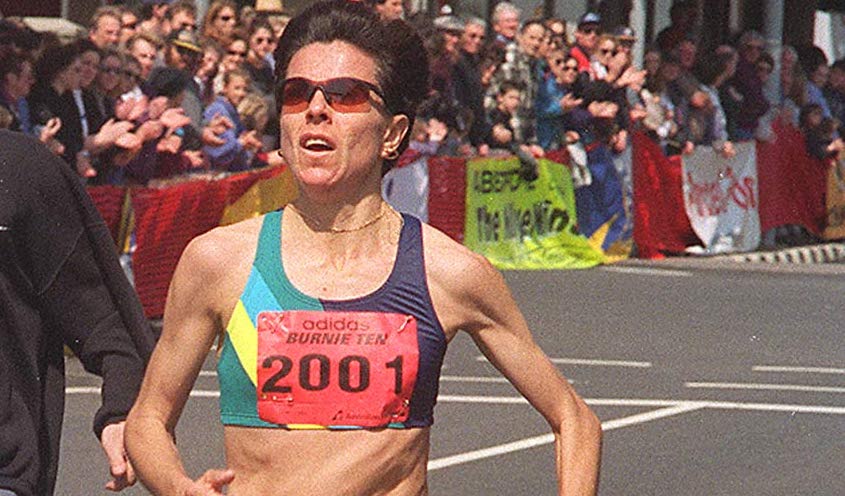
N.M. Marathon champion of the 1980’s, Alberto Salazar also had problems with his thyroid.
D.T. That’s right. In fact, I tested Alberto and found that he had a loss in efficiency which was affecting his running.
So , yes, I’ve been really lucky to work with some great runners. Just watching Benita Johnson come through as a 17, 18, 19, 20, 21, 22 year old has been fantastic. Every year watching her progress but not pushing her too hard so that the improvement stops. Making sure to hold her back while she’s developing so her best years are ahead of her.
N.M. You’ve mentioned many great athletes that you’ve coached or worked with – people like Rob de Castella. What made these athletes great?
D.T. Well, as you’d know, I was Rob’s Physiologist not his coach as Pat Clohessy was his coach and Pat did a fantastic job with Rob. Rob, along with all the top athletes I have seen or worked with, had an incredible desire to do well. A lot of people said that Lloydy was just a ‘Fun Runner’ and that was true, he was when I started working with him. But very soon it became very evident that he had an intense desire to do well. He would never shirk on a training session. He used to say, “you do the thinking – I’ll do the running! You just tell me what to do and I’ll do it! And even if I’m struggling, I’ll run myself into the ground until I do it!” That’s the sort of attitude he had. Now, I don’t think that’s necessarily the right attitude because I have other athletes who will talk to me and say, “Geez, Dick – I’m feeling really tired tonight!” and we’d talk it through and maybe change the session.
I have been involved in a lot of sports, from Physiologist with the Australian Swimming Team to the Australian Canoeing Team and without doubt, the hardest sport in the world is distance running because I don’t see too many Ethiopian canoeists or Kenyan swimmers or Moroccan triathletes. You see a few soccer players from these countries but you also see one hell of a lot of runners!
That’s one of the reasons I became involved – it’s the sport that’s the most difficult to reach the top in so why not have a go at it!
N.M. Rob de Castella seemed almost ‘bulletproof” in that he never seemed to get injured. Was this good management or did he have a body that could handle the pounding?
D.T. Well, there certainly was no luck involved as Pat brought Rob on gradually and sensibly so he could handle the training. One of Pat’s great strengths as a coach was knowing when athletes need to ‘back off’. Year after year after year, Rob gradually built up the quality and quantity of his training so he could progress without injury. It’s been the same with Benita. Holding athletes back for success later on is one of the best things a coach can do for a developing athlete.
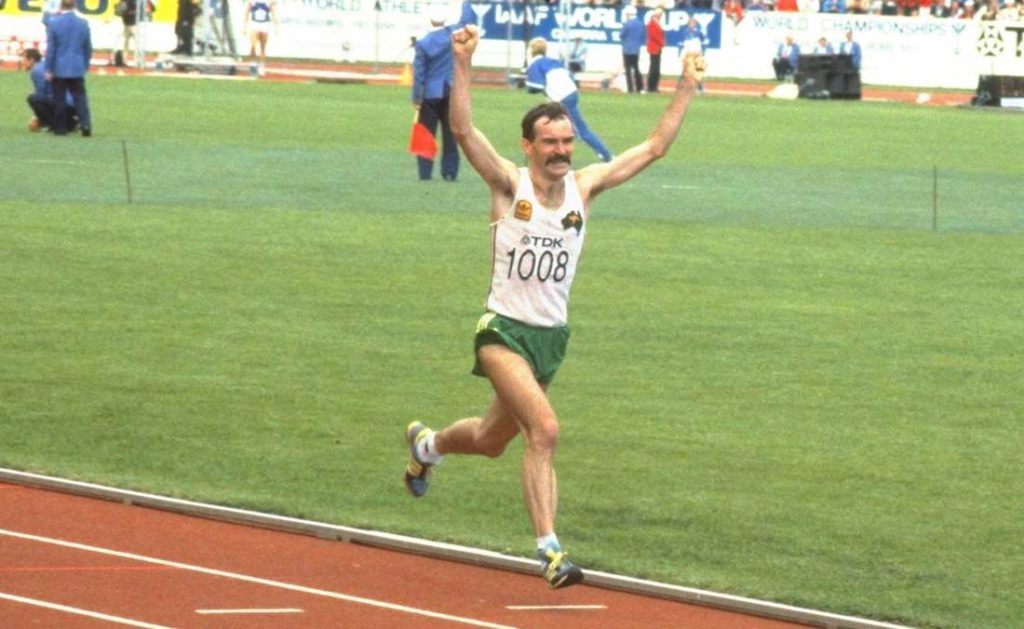
N.M. Andrew Lloyd’s Commonwealth Games 5000 metre gold in 1990. Was this the most exciting race you’ve been involved in?
D.T. I think it would have to be. I have seen a lot of exciting races but that’s the one that comes to mind being so excited that I could barely speak because it happened so quickly. That particular year we did really work on Lloydy’s speed. There was no way known he could compete with Yobes Ondieki of John Ngugi in an endurance / threshold race. For a start the selectors didn’t want to select him …… typical!!! Anyway, he finally got over there and I figured that he was an outside chance for a bronze if the race was run to suit him. In fact, before the race I would have said a ‘top 6’ placing would be a fantastic effort. But what we did do was change his training programme a fair bit on the assumption that the race was going to be slow for some reason, like a bad weather day or people ‘foxing around’, and that it was going to come down to the fast last 400 – 800 metres. So we worked on his speed hoping that he would still be there at the end because if it was run at a fast, even tempo it would have been ‘see you later, mate!’ Many people have critisized him for sitting on Mona in races and outkicking him at the end but they don’t realise that he couldn’t get past Mona and stay But what Lloydy did have was a huge anaerobic capacity. No matter how ‘stuffed’ he was at training he could always raise a fast sprint at the end. In training he might be doing a 1600 metre repetition in about 4:30 and he would be running the third lap so you were in doubt that he could even finish the last lap, but you’d say, “come on Lloydy – go for it!” and he’d always finish fast. Then he might take half an hour to recover where some of the other runners might only take 5 – 10 minutes to recover because he’s more anaerobic.
Actually, he missed his best athletic event. His best distance was the 1500 metres. He was able to run 3:36.60 for 1500 metres overseas even though he was about 29 and training mainly for longer races. I reckon if he had concentrated on the 1500 metres / mile when he was 20 /21 years of age he could have been one of our best ever middle distance runners.
Anyway, we trained for a fast finish and history tells us that the race was slow because Ondieki and Ngugi fell over, but with a lap to go Ngugi was still holding a comfortable lead. Then Lloydy took off like a train and caught Ngugi right on the line.

N.M. And when asked later what he was thinking with 200 metres to go, Lloydy said, “bugger the silver – I’m going for the gold!”
D.T. Yes. So the race was a punt that paid off. Actually, he still ran a P.B.
N.M. You have also coached a few athletes that many would call eccentric. Lisa Martin / Ondieki probably got the best out of herself by being so single-minded?
D.T. Yes, you can argue that way because attitudes can be a positive or a negative, depending on the situation. However, I’ve never come across anyone with the work ethic that Lisa possessed. She would just devote herself to the training required. Lisa didn’t need to go out and run in the forests, she would just run ten miles around the lake in the morning, then ten miles around the lake again in the afternoon. Next day, it was the same again, except for her long runs and track sessions. We would do 200’s and 400’s on the track but her training was basically, track and lake, track and lake!
Later on she changed a bit but she only did that because Yobes wanted to run in the forest. But she had unbelievable tenacity. However, I don’t believe that she got the best out of herself. A couple of years before the ‘96’ Olympics she fell over the front porch, damaging the sole of her foot. This stopped her running in the years when I thought she was capable of beating the Australian Record. It was really sad, actually because she spent a lot of her money and so much time and emotional energy trying to get it right. But it was never the same again – she found it difficult to flex her foot properly and the 18 months leading up to the Atlanta Olympics was pretty tough for her. She even moved to Townsville to live and did everything right but she couldn’t run properly. And all because of a simple fall, not because of a running injury.
N.M. You tell the story of Lisa having low iron stores at one stage and you suggested that she eat a little liver. Could you please relate what happened next?
D.T. This is a pretty good indication of how Lisa sees things. Everything about her running had to be just right. When she became iron deficient I told her about how good liver was in fixing this deficiency rather than just taking tablets. Anyway, I thought she’d just have a serve of liver once a week. Then two or three weeks later I asked her how the liver was going and she said, “fine”. Then I asked her if she liked it and she replied, “No, I don’t really like it but it’s OK.” Next I asked if she’d cooked it two or three times and she said, “No, I’ve eaten it every single day and if that’s what I need to keep my iron stores at the right level, I’ll keep eating it every single day!” But that’s Lisa for you – an athlete who would do whatever it took to run well.
N.M. Darren Wilson was another incredible talent – his 60.02 for the Tokyo Half Marathon is arguably the Australian distance running record that is closest to World Standards. Leading up to that run did you think he would run that fast?
D.T. No …….. His training indicated he was going to run well but 60:02 was incredible. I would have been happy with sub 62. He was very fit and had put in a great year of training. He’d done everything right and I don’t take credit for that – it was, Glenda, his partner who supplied the stability that he needed to run well.
That year I was overseas for a while but he just completed every training session. None of the sessions were sensational but I didn’t want that – what I did want was the consistency, just getting the work done. He went to Falls Creek that year and a few of the guys were astounded that he ran so well in Tokyo after not running super well on the mountain. However, I told him to hold back at Falls Creek and let the others go if they wanted to ‘hammer’ a session – that his race was in Tokyo, not Falls Creek. A few of them must have thought he was unfit. But when he came back from Falls Creek I hammered him for five days, then rested him for a week before his race.
N.M. What sort of sessions did you set for those tough five days?
D.T. They were just standard workouts at around threshold pace. I’d have to check my diaries but it would have been things like a set of hard 400’s, a set of hard 5 minute efforts, a very hard ‘all out’ 30 minute effort away from the track. Just sessions that required him to run ‘flat out’ with good rest in between so he would be recovering between efforts. These five days were a real ‘tune-up’ block. But for Darren to run 60.02 was fantastic, especially when you consider that Mona’s best was 60.06 on the same course. Then Darren’s form continued when he ran 27:37.00 for 10 km. just behind Shaun Creighton’s Australian Record (27:31.92). In fact, in the lead up to the Zatopek, I had Darren and Shaun training together which was fantastic for both of them. I remember one day when I set up a session so they were going to compete, although they didn’t know it. The session was to run four repetition miles really quick 4:13 to 4:15 and I knew it was going to be on. From that session I could tell that they were both ready to run really
N.M. What do you reckon is Darren’s best distance?
D.T. I think 10 km.
N.M. He has been doing some training up here this year. Is he serious about a come-back?
D.T. He has said he’s serious a few times. Darren’s problems are mainly to do with his finances and getting into a position where he can support himself so that he can run. He needs to focus on his running and not worry about the rest of his life. However, unless he comes to Canberra with me, I know I will not have any control so he would have to be coached by someone where he’s living. Darren is a high maintenance athlete!
N.M. Nickey Carroll is another of your athletes that is a little eccentric in that she does not train on the track but would rather do all her running in the bush. How did you come to work with Nickey and the reasons behind her training preferences?
D.T. When Nickey rang me to ask if I would coach her, at first I thought I was talking to Nyla Carroll from New Zealand, who I had coached before. I had met Nickey once before in Athens but had spoken to her for only about 5 minutes in total. However, Nickey and her partner, Don have become really close friends. Nickey’s come from an ultra – marathon background and can’t understand why people want to run on the track. This morning we went down the road past Howman’s Gap and ran for an hour along fern lined trails.
She just loves to run in the bush – her eyes really light up. I sometimes feel that she doesn’t always put the competition first, but rather the running. She wants to run marathons and she wants to run them fast but it’s the expectations from everyone else that worries her. My job is to continually work with her to run on the track and to run more races. She gets very nervous before races and I personally believe that she wants to avoid being nervous. She even gets nervous being around other athletes because they remind her that she should be training on the track and racing more often. That’s why she tends to stay away from other runners.
N.M. Has she got over the last few D.N.F.’s while representing Australia?
D.T. She has because she knows the reasons for them. She had a couple of problems, one was nerve compression in the hip and the other was the interaction between some of her hormones and that is partly a hereditary problem. The result of these two problems were that she was getting very tired and as happened at the Sydney Olympics, her foot went numb, absolutely numb so that she almost fell over. Physically she just could not run on after 20 kilometres. Then she feels that people thinks she’s a ‘nut case’ because of the problems we talked about before. So all these things build up the pressure. But now she’s on the up and over the last few weeks she’s the best I’ve seen her for a couple of years. Unbelievably, when she ran 2 hours 25 minutes for the 1999 London Marathon, she was not fully fit so it will be interesting to see what she can do in the future.
N.M. You mentioned Benita Johnson before. It must be really exciting to get a talented kid that you think will go places as long as you’re patient? What did you think when she first turned up?
D.T. I knew she was a good runner but there were another five girls nearly as good as she was but Benita was in a position to come down to the A.I.S. However, I asked her to come down because I was worried she was going to go to hockey and I didn’t want Ric Charlesworth to get her. In hindsight, that was one of the best decisions in my life. I was able to offer her a full scholarship which we would not normally be able to do and without that full scholarship, I don’t think we would have got her. We’ve had athletes like Mark Thompson and Martin Dent and Clint Mackevicius to who I’ve had to say, “look, I can coach you and we can give you a little sports medicine back-up and we can contribute $30 a week towards your rent, but that’s it!” But I was not going to take any chances with Benita because if I didn’t, Ric Charlesworth would grab her.
N.M. Was she that good at hockey?
D.T. Yes, she was. I reckon with Benita’s temperament and physical abilities she could have gone to senior Australian representation.
N.M. And you were saying that you deliberately held her back when she was young?
D.T. Yes, I’ve deliberately held her back every year, even last year. I said to Benita when she was 17,
“I can’t be sure but there’s a chance that by the time you’re 25 you could be one of the world’s best runners. However, we are going to work up gradually and sensibly.”
A lot of the work I gave Benita was not measureable, it was done on grass. I’d improvise some of her sessions where she might be running on the inside of the guys and so covering less distance. She would also do a lot of fartlek style sessions where she would be running for time rather than distance and time. I could have had Benita running faster when she was younger but you’ve got to look at the ‘big picture’.
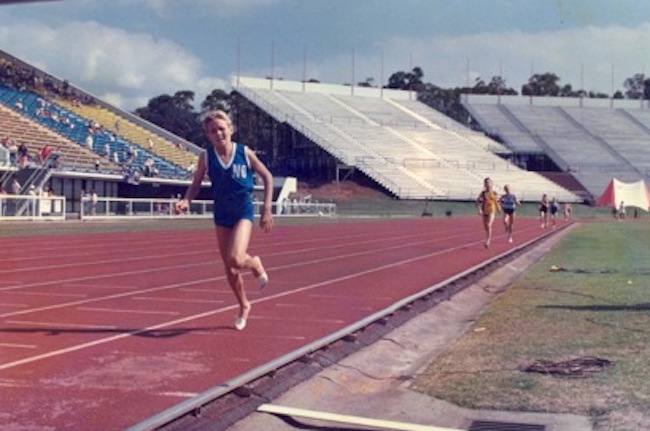
N.M. Was it tough to lose her to Nick Bideau, who is now coaching her?
D.T. Yes, but I consider that part of coaching. It’s tough knowing that going into the Commonwealth Games she had an iron deficiency and diarrhoea that I didn’t pick up at the time. She told me she had the diarrhoea but she was taking iron tablets. However, something was wrong because she was racing over 3000 metres and her threshold just wasn’t there. Training was going pretty well even though we weren’t measuring a lot of it because I didn’t want to put her under too much pressure on the training track. As it turned out she wasn’t absorbing the iron and her ferritin went down. Then four or five weeks after the Commonwealth Games her ferritin is up and she’s running well again.
N.M. Did she eat liver or continue taking iron supplements?
D.T. She ate liver and also took some different supplements once she could absorb the iron. However, it’s great that she’s doing so well. I thought that last year she could win a medal at the Commonwealth Games but for her iron problem. A lot of people looking on may think that the training wasn’t right or she doesn’t run well in the ‘big ones’ – that’s a lot of rubbish. She’s broken Australian Records, she’s finished fourth at the World Cross – Country, she’s run really well in the ‘big ones’ except the Commonwealth Games when I wasn’t there. I’ll never make the mistake of not being around an athlete in the lead-up to a major competition again because you can’t really see the full picture. People may look at the Commonwealth Games and say, “Dick did not prepare Benita properly”, but that’s rubbish. I’ve had so many athletes now who have competed well in major finals and I know how to prepare athletes to run their best. It’s simple – anyone can do it!
N.M. What is your coaching philosophy?
D.T. I would say variety in training and an individual training programme so that each of my athletes is training differently. I can’t think of any two of my athletes who train the same although they often share sessions. However, most coaches would adopt an individualised programme.
N.M. How many do you have in your squad?
D.T. Ummm …… Probably sixteen at the moment. However, I don’t just coach champion athletes. I’ve got a lot of people who are not going to champions but the common factor amongst all the athletes I coach is that they want to be the best they can be. And I try to treat all my athletes as equals from the scholarship holder to the athlete trying to break 15 minutes for 5 km. If they’re in my squad and they’re having a ‘real dip’, then as far as I’m concerned they’re equals. One athlete may be more important for my coaching career but that doesn’t influence how I work with my athletes.
N.M. I’ve heard you say that one of your coaching goals is to have each of your athletes recording a P.B. every year.
D.T. Yes, I feel that I have done my job if that happens. The satisfaction gained from running a P.B. is enormous. Occasionally there will be something that interferes with an athlete running a P.B. so then you look for reasons and try to remedy those.
N.M. What sort of testing do you regularly undertake with your athletes to see if they’re fit and healthy and not overtraining?
D.T. I don’t test for over – training, I just talk to them . We do blood testing for iron and magnesium and a few other bits and pieces to see what’s going on. Philo Saunders from the R.M.I.T. is doing his Ph.d and I’m his supervisor and he and I are looking at running economy. We know that running economy is very important so we’re looking at what effects economy – things like training, altitude, heat etc.
N.M. At the moment we have athletes such as Gebrselassie, Khannouchi, Radcliffe and El Guerrouj running unbelievable times. Why is this happening? Are they just superstars or are they doing something we aren’t doing?
D.T. Ummmm ……. I think as we progress the genetic pool improves. Also, there is a lot more money going into the sport now so athletes can become fully professional, can utilize the best in training facilities and training knowledge and stay in the sport for longer. That’s a few of the reasons. However, we do know that drugs such as anabolic steroids, E.P.O., growth hormone and blood-doping before that have been used. So there’s no point in saying that the sport is clean because it’s not. However, I try not to think about that because it’s completely out of our control. So for some records drugs could be a contributing factor. But having said all that I would be absolutely dismayed if a few of the people you mentioned were doing anything wrong. I personally don’t think they are.
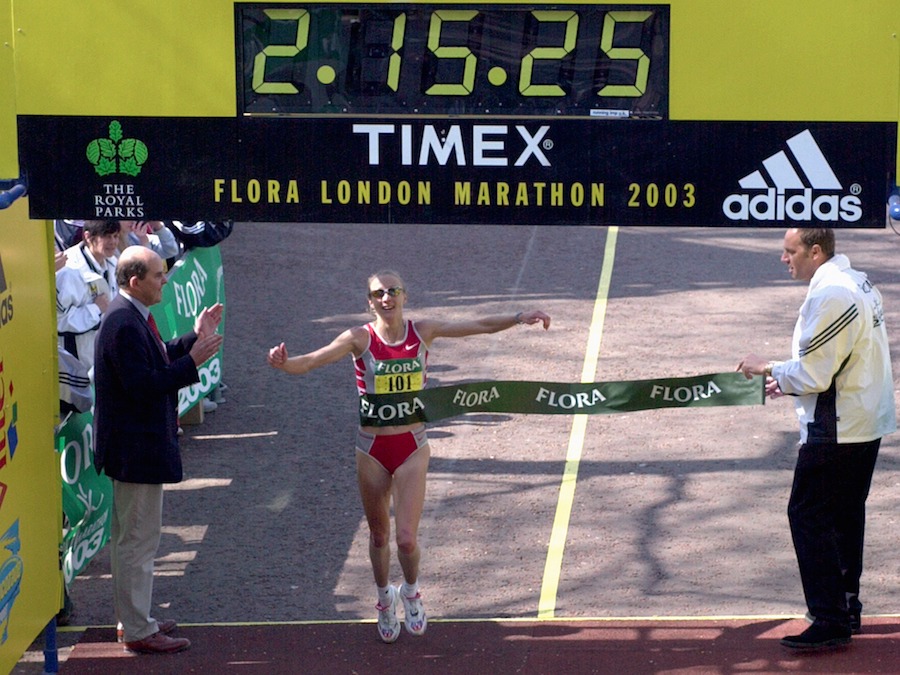
N.M. What are your comments on the Aouita Programme that some Australian coaches are using?
D.T. That’s the Moroccan Programme and I discussed it with his runners in 1993 so it’s nothing new to me. I incorporate it into my training programme although my training is not the Moroccan Program, it’s an Australian Programme that has some Kenyan, Moroccan, New Zealand, Ethiopian, Australian elements to it.
N.M. So you believe that you’ve taken the best elements of each Programme?
D.T. Ummmm ……. It’s what I believe is the best but it’s probably not. However, if you’ve studied the ‘big picture’ and you think you’re getting the best out of your athletes and they’re running P.B.’s every year, it’s very difficult to suddenly change your programme dramatically and begin doing something different. I’ve actually talked to Said about that and he’s happy because he looks at a programme and sees a whole lot of common elements. I talked to Said this morning and I told him about the sessions we’d completed over the last week and he said that sounded great. But he’s been given a job to do and if he said to me, “yes, that’s good but you could improve this aspect of your training,” I’d listen because the guy must know a lot – he’s been one of the greatest athletes we’ve ever seen, I’ve even got his autographed picture on my wall at home – he’s got to know something. What people must remember is that he’s coming from a completely different system to a democratic Australian system were people are doing lots of different things. One thing I have learnt over the years is that there are many ways to get an athlete to run 28 minutes for 10 km. There might be one slightly better way but in Australia there are choices to be made. However, in other countries there is the National Programme that everyone follows. At first, I think Said was taken by surprise when some people didn’t want to follow his Programme but I think his heart is in the right place.
N.M. Do you know his Programme all the way through because at the meeting held at the V.I.S. a few weeks ago people walked away from a little confused as to what happens in Phase 2, Phase 3, Phase 4 etc.?
D.T. No, I don’t know the complete programme, I just know the philosophy but I’ll go through the specifics with Said when I get back to Canberra. One of the main problems was that many coaches had already done a winter programme and did not need to complete Phase 1 first. You need to enter a programme according to what stage you’re at. I’d have athletes ready to go into Phase 2 and 3 because we’ve got our racing season coming up. But what’s Athletics Australia going to say to me if I say, “sorry, we’re not going to run these three races.” They’ll answer, “OK, but your athletes won’t be considered for selection and Dick, you won’t have your job in two years time.”
Many of the guys in Morocco that Said has worked with were already international athletes that knew they were going to be selected or qualify. I don’t have any athletes guaranteed of selection. I wish I did so that I could take a much different approach. For a start, I wouldn’t be peaking someone for a 10 km. in New Zealand on February 16th when the main races are much later on.
N.M. Craig Mottram commented that he was glad he’d run a few qualifiers in Europe last season so that he could use our domestic season as preparation rather than chasing qualifying times.
D.T. Yes, that’s a huge advantage. We’ve got a lot of things to consider in Australia with people going to the World Cross – Country and other races. There’s no point in our athletes running this race OK and that race OK. You’ve got to run some races the best you possibly can if you want to go to another level and trying to have multiple peaks is not easy unless you’re an absolute champion who can roll through a few events and win at less than 100%, both physically and psychologically.
N.M. Dick, thank you very much for your time and all the best for the upcoming year.
D.T. Thanks, Neil.




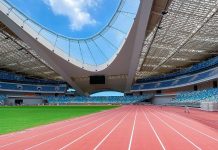


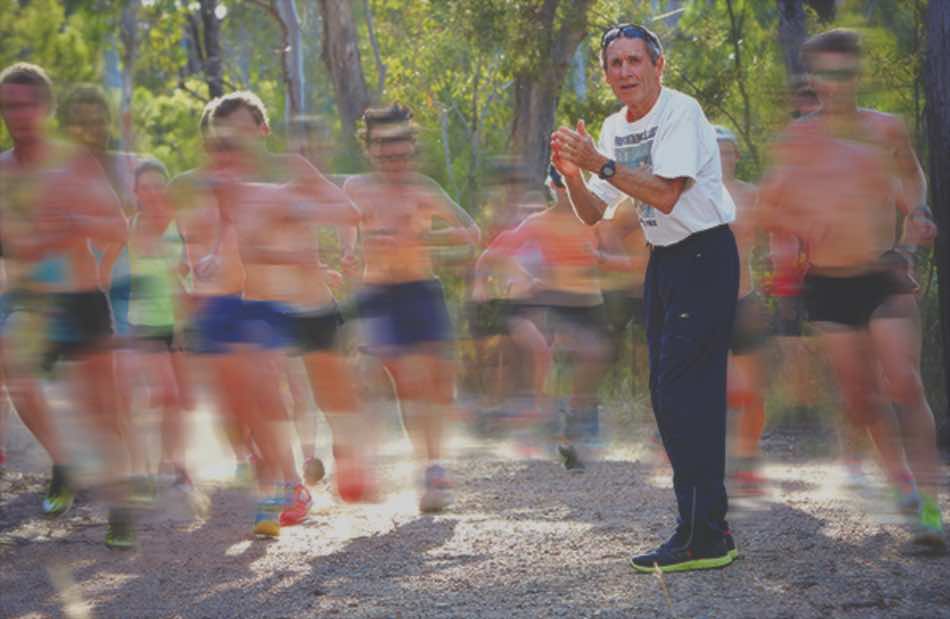























Comments are closed.